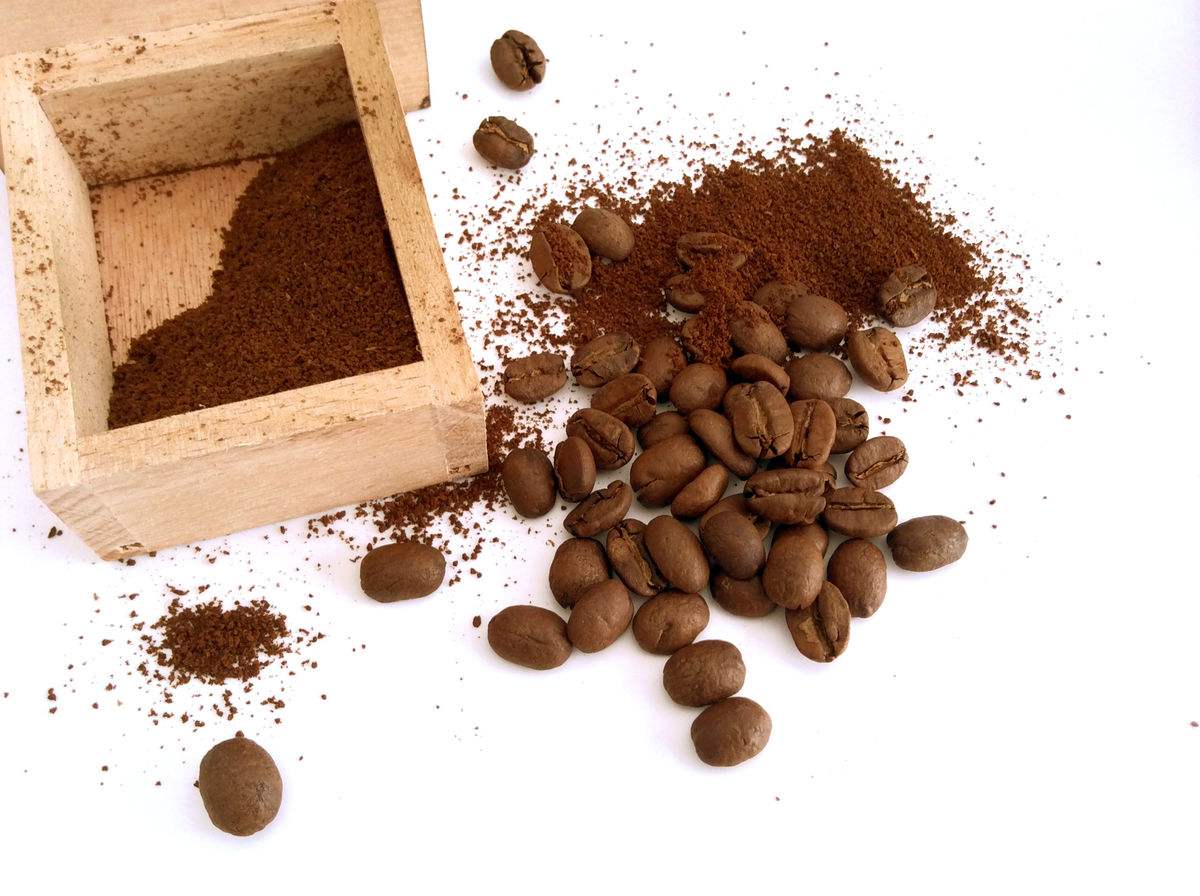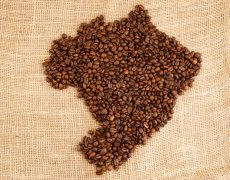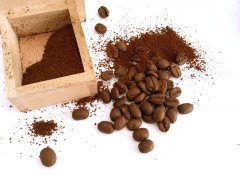The history of cat shit coffee originated from Java and Sumatra in Indonesia, Indonesia coffee specialty
The history of Kopi Luwak can be traced back to the beginning of the Indonesian coffee industry, which began in the 18th century, when Dutch colonists established coffee bean plantations on the Indonesian islands of Java and Sumatra, also known as the Dutch East Indies. Their coffee and fruit plantations include small fruit coffee imported from Yemen. In the colonial era from 1830 to 1870, the Europeans saw the low level of development of these countries compared to themselves, so they wanted to seize the natural resources specialties of these countries. The coffee fruit plantations set up by the Dutch receive a lot of goods, but they forbid local indigenous farmers to use the coffee fruit for their own use.
But in the face of the coffee fruits they have grown and collected, these workers are naturally curious about this world-famous drink they have never tried before. So the history of Kopi Luwak began: the farmers found that local civets also ate coffee fruits, but they could still see whole coffee beans in their feces, so they took the undigested coffee beans back to wash, roast, grind and drink. So they produced their own coffee drinks. However, the coffee obtained in this way seemed to taste far more than they had imagined-it smelled strong and fragrant, and this special fragrance made the musk Kopi Luwak widely spread among the local people and the Dutch colonists, and soon became their favorite. So even in that colonial era, Kopi Luwak was sold at high prices. This is the history of Kopi Luwak. Until now, its price is still high, and it is likely to rise rather than decrease.
Origin: The History behind the World's Most Expensive Coffee in addition to this saying, there is another version of the birth of Kopi Luwak: the Indonesian island of Sumatra is covered with lush coffee trees. For centuries, islanders have made a living by collecting coffee beans. But in recent years, whenever the coffee is about to ripen, the troubles of the islanders also come.
This is because a kind of animal called palm cat began to live and breed on the island. Palm cats like to eat coffee fruits, and they are better at climbing trees than humans, often before people start picking, the most ripe and reddest coffee fruits have become a good meal for these palm cats. As a result of the competition for palm cats, the coffee resources available to the islanders have been greatly reduced. For this reason, the islanders hated this competitor so much that they began to drive away palm cats during the coffee ripening season, and then began to attack and kill them. People want to ensure the harvest of coffee by wiping out palm cats. Hunger and killing led to the death of a large number of palm cats, and people finally achieved the goal of monopolizing coffee. Coffee fruit grows on tall coffee trees. People have to climb trees when picking coffee, so it's a very hard work.
One day, a lazy man who didn't want to climb a tree suddenly found that there were always a lot of undigested coffee beans in the droppings of those palm cats who stepped on their feet. It turns out that palm cats only like to eat sweet coffee fruit, but the coffee beans in the fruit are excreted because they are indigestible. So the man secretly collected the coffee beans excreted by the palm cat. He took it back as collected coffee beans and sold them to a coffee merchant. Unexpectedly, the businessman had a deep study of coffee, and when he smelled the smell of these coffees, he immediately felt that they were extraordinary. When he tasted the coffee, he was even more surprised, because it was not only as thick as syrup, but also as thick as chocolate. it was so mellow and smooth that he had never tasted such wonderful coffee. He put down the cup, immediately found the coffee seller and asked where the coffee came from. So the man had to tell the origin of the coffee beans. After hearing this, the coffee merchant sighed the god of creation and thought that the method of fermenting coffee could only ferment ordinary coffee, while the digestive system of palm cats actually produced a special fermentation process for coffee, transforming the originally ordinary coffee beans into a unique artifact in the world. After sighing, he began to pay a high price for this palm cat coffee from the islanders. It was not until then that the islanders were no longer enemies of palm cats. They carry baskets, struggling to find palm cat droppings, and every day, their best hope is to have a large number of palm cats to eat coffee fruits, and then excrete more attractive palm cat coffee beans.
Because a pound of Palm Cat Coffee can be sold for $300, its price far exceeds that of famous brands such as Blue Mountain and Kona, making it truly the most expensive coffee in the world. The original text is the author heard the introduction of Kopi Luwak in a coffee factory in Bali. Who pushed Kopi Luwak to the world: provenance: "Kopi Luwak, this shit is really not worth that much money!" Tony Wild is the first person to bring Kopi Luwak into public view, but now he is calling on us to boycott this luxury product together.
(text / Tony Wild)
For the past 20 years, Kopi Luwak has been the "ultimate coffee". With its excellent taste and hard-won, it is regarded as a treasure by coffee sellers around the world, even appearing in CNN News, Oprah Show and Hollywood movies. I first read the description of Kopi Luwak in a National Geographic magazine in 1981. Ten years later, in 1991, as director of coffee at Taylors of Harrogate, I was the first to introduce Kopi Luwak to the West. At that time, I bought only one kilogram and did not sell it through the company. Instead, I thought that maybe this kind of curiosity would arouse the interest of the local Yorkshire newspapers and radio stations where the company is located. The result was far more than I expected-it was widely reported by newspapers, television and radio. Since then, Kopi Luwak has gradually come into the public eye. The real Indonesian Kopi Luwak is collected from the droppings of a local wild animal called Paradoxurus hermaphroditus. The coconut cat is a timid nocturnal animal that takes advantage of the night to eat ripe coffee fruit during a bumper harvest on the coffee plantation. However, they cannot digest the seeds, that is, coffee beans, which are excreted in their faeces.
The coffee beans, which pass through the coconut cat's digestive tract and anal glands (they mark the territory with the smell of the anal glands), are collected by farm workers and washed to form a unique flavor that is widely respected. At that time, because coconut cats were wild, rare in number, difficult to collect feces, and the quality of coffee beans harvested varied from time to time, Kopi Luwak was not a commercially viable crop, but an interesting coffee treasure. that's why I bought it. But now, it is hard to see the original Kopi Luwak. Today's Kopi Luwak comes mostly from wild coconut cats in cages, and they are generally kept in harsh conditions. A Japanese scientist recently claimed to have invented a way to tell whether coffee beans come from wild coconut cats or captive coconut cats, especially if he can tell whether coffee beans come from wild coconut cats or captive ones.
Many coffee companies around the world are still using the original story about wildlife digestion habits as a stunt to sell Kopi Luwak. Many companies claim that they can only collect 500kg Kopi Luwak a year. And use this scarcity to justify its high price (Kopi Luwak usually sells for $200,400 per kilogram, sometimes more). In fact, although exact figures are not available, I estimate that Kopi Luwak's annual global production is at least 50 tons, much more than that is possible. Now farmers in India, Vietnam, China and the Philippines have joined the production of Kopi Luwak. Today's Kopi Luwak in Indonesia is basically the product of industrial production, and the original ecology is almost impossible. Doesn't that sound a little disgusting?
That's true. These timid and solitary creatures have to be huddled in a cage with their own kind, which puts them under great pressure, and an abnormal diet with too much emphasis on coffee fruits also makes them suffer from other health problems. Coconut cats in cages begin to fight with each other, even bite off their legs, feces begin to carry blood, and death is even more common. In Indonesia, the trapping of wild coconut cats is supposed to be strictly controlled, but they are caged by poachers and forcibly fed with coffee fruits to excrete more feces with coffee beans. and it's all for profiteering and the hypocritical pleasures of some people. Kopi Luwak's business has been a great success, especially among consumers who spend a lot of money. If you are worried about preparing a birthday present for your tuhao friend, how about spending 6500 pounds on a Kopi Luwak wrapped in 24-karat gold foil at Harrods, the most famous and upscale department store in the UK?
In fact, what you buy is no longer Kopi Luwak, just like Thai shit coffee and Brazilian sparrow shit coffee, which are popular all over the world, are just used to satisfy people's insatiable desire for this strange and superficial vanity. At the beginning, I made an inadvertent purchase, which led to such incredible progress. At that time I introduced Kopi Luwak to the UK. It was a strange and novel short story, but now it has been overpriced and over-industrialised. People use it to cover themselves with a veil of hypocrisy to whitewash their abnormal taste and senseless vanity. I hope everyone can think about it, to satisfy their own interest can not be at the expense of wild animals, this cancer can no longer continue, it is time to stop. Note: coconut cats are palm cats, which belong to the civet family as well as musk cats.

Important Notice :
前街咖啡 FrontStreet Coffee has moved to new addredd:
FrontStreet Coffee Address: 315,Donghua East Road,GuangZhou
Tel:020 38364473
- Prev

The planting situation of Orovid Coffee Manor in Brazil in 2015, the runner-up of COE peeling and tanning.
For the exchange of professional baristas, please follow the coffee workshop (Wechat official account cafe_style) name: 2015 COE peeling and tanning runner-up in Brazil Orovid Manor in Brazil washed Kadouai (non-winning bidding lot) (Brazil Bahia Ouro Verde Catuai Washed) Flavor description: balanced sweetness, creamy smoothness, delicate fruit flavor, fruit flavor
- Next

Popular Kopi Luwak, Thai shit coffee, Brazilian sparrow shit coffee, actually the excretion of palm cats
The history of Kopi Luwak can be traced back to the beginning of the Indonesian coffee industry, which began in the 18th century, when Dutch colonists established coffee bean plantations on the Indonesian islands of Java and Sumatra, also known as the Dutch East Indies. Their coffee and fruit plantations include small fruit coffee imported from Yemen. In the colonial era from 1830 to 1870, those
Related
- Detailed explanation of Jadeite planting Land in Panamanian Jadeite Manor introduction to the grading system of Jadeite competitive bidding, Red bid, Green bid and Rose Summer
- Story of Coffee planting in Brenka region of Costa Rica Stonehenge Manor anaerobic heavy honey treatment of flavor mouth
- What's on the barrel of Blue Mountain Coffee beans?
- Can American coffee also pull flowers? How to use hot American style to pull out a good-looking pattern?
- Can you make a cold extract with coffee beans? What is the right proportion for cold-extracted coffee formula?
- Indonesian PWN Gold Mandrine Coffee Origin Features Flavor How to Chong? Mandolin coffee is American.
- A brief introduction to the flavor characteristics of Brazilian yellow bourbon coffee beans
- What is the effect of different water quality on the flavor of cold-extracted coffee? What kind of water is best for brewing coffee?
- Why do you think of Rose Summer whenever you mention Panamanian coffee?
- Introduction to the characteristics of authentic blue mountain coffee bean producing areas? What is the CIB Coffee Authority in Jamaica?

